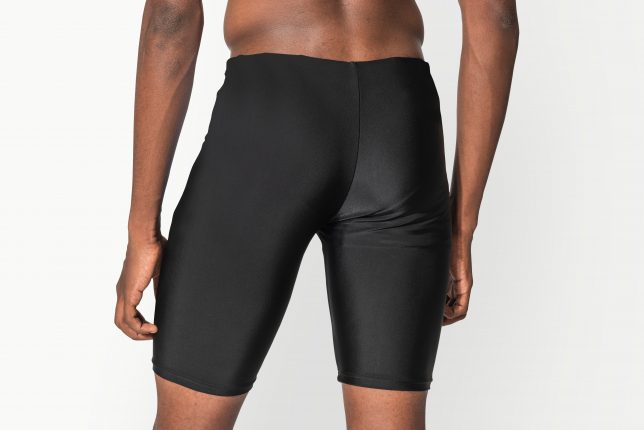Home>Running Locations>Nature>Winter Running: The Impact of Compression Shorts on Thermal Regulation


Nature
Winter Running: The Impact of Compression Shorts on Thermal Regulation
Modified: August 18, 2023
Uncover the impact of compression shorts on thermal regulation during winter running. Learn how these specialized garments can contribute to your overall winter running experience by providing both support and thermal regulation.
For many, running is not just a warm-weather activity. It’s a year-round commitment, and as the winter months roll in, a runner’s gear needs to adapt to the changes in temperature. One piece of gear that often comes up in winter running discussions is compression shorts. How do these tight-fitting garments affect thermal regulation during a cold-weather run? This article seeks to answer that question and shed some light on the function and benefits of compression shorts in winter running.
Understanding Compression Shorts
Before delving into the nitty-gritty of thermal regulation, it’s crucial to have a clear understanding of what compression shorts are and why runners choose to wear them.
What Are Compression Shorts?
Compression shorts are a type of sportswear made from a stretchy fabric that fits tightly around the wearer’s skin. These shorts come in different lengths, from ones that resemble traditional running shorts to ones that reach down to the knee.
Why Runners Wear Compression Shorts
Runners typically wear compression shorts for three main reasons:
Enhanced Performance
The tight fit of compression shorts supports the thigh muscles, which can improve running performance by reducing muscle vibration and promoting more efficient movement.
Reduced Muscle Fatigue
Compression shorts are believed to improve blood circulation, potentially reducing muscle fatigue and speeding up recovery after running.
Prevention of Chafing
The snug fit of compression shorts can prevent chafing that sometimes occurs when running, particularly over long distances.

Image from Adobe
The Science of Thermal Regulation
To understand how compression shorts affect thermal regulation during winter running, it’s important first to understand what thermal regulation is.
Thermal regulation refers to the body’s ability to maintain its core internal temperature despite external environmental changes. When running in cold weather, the body works to keep the core warm, which often means pulling heat away from the limbs. The key to comfortable winter running is to strike a balance that keeps the core and the extremities adequately warm without causing overheating.
Compression Shorts and Thermal Regulation
So, how do compression shorts come into play in thermal regulation during winter running? Here are some points to consider:
Insulation
One way compression shorts can aid in thermal regulation is by providing an additional layer of insulation. The tight-fitting fabric can help trap body heat, providing a warming effect. This can be particularly beneficial for the upper leg muscles, helping them stay warm and function more effectively in cold conditions.
Muscle Performance
Keeping muscles warm is essential for optimum performance, especially in cold weather. As noted earlier, compression shorts support the muscles and improve blood circulation. This increased circulation can help maintain muscle temperature, contributing to better performance and a reduced risk of injuries that can occur when muscles cool down too much.
Moisture Management
Many compression shorts are made from moisture-wicking fabrics. This means they pull sweat away from the skin, helping to keep you dry during your run. Indeed, this is crucial in cold weather, as wet skin can rapidly lose heat, leading to discomfort and a risk of hypothermia.
Choosing the Right Compression Shorts for Winter Running
Choosing the right compression shorts for winter running is all about balancing warmth, comfort, and functionality. Here are a few things to consider:
Material
Look for compression shorts made from a blend of synthetic materials. Polyester, nylon, or a blend of both is often used for its moisture-wicking and quick-drying properties.
Fit
Compression shorts should fit snugly, but they should not be so tight that they restrict movement. The right fit will provide muscle support and aid in thermal regulation without being uncomfortable.
Layering
In colder weather, compression shorts can be worn as a base layer under other running gear, such as running tights or pants. This layering approach provides added warmth and flexibility.
Conclusion
Compression shorts can play a valuable role in thermal regulation during winter running. For instance, their snug fit, insulation properties, and moisture-wicking capabilities contribute to keeping your muscles warm, enhancing performance, and preventing discomfort caused by excess sweat. Thus, by choosing the right compression shorts and layering them appropriately, you can stay comfortable and perform at your best even in the coldest winter conditions.
Frequently Asked Questions
1. Can I wear compression shorts alone for winter running?
While compression shorts alone may not provide enough warmth for very cold conditions, they can be a suitable base layer for layering with additional running gear.
2. Do compression shorts prevent muscle soreness after a winter run?
Compression shorts may help reduce muscle soreness and aid in recovery by improving blood circulation.
3. Are compression shorts suitable for all body types?
Compression shorts come in various sizes to accommodate different body types. Indeed, it’s important to choose the right size for a comfortable and effective fit.
4. Can compression shorts be worn in warm weather?
Runners frequently wear compression shorts in warm weather as well. They can help with moisture management and muscle support, regardless of the temperature.
5. Do compression shorts replace other winter running gear?
Compression shorts are typically worn as a base layer, and additional layers such as tights or pants may be necessary for added warmth in colder conditions.